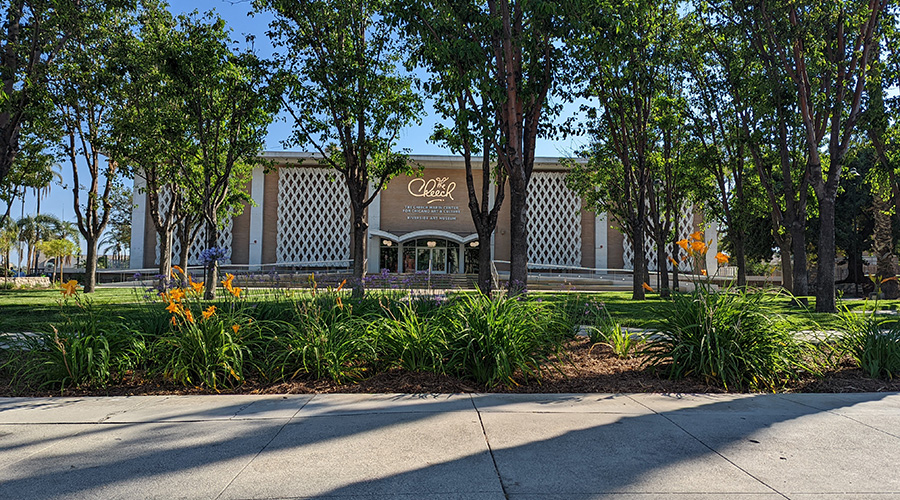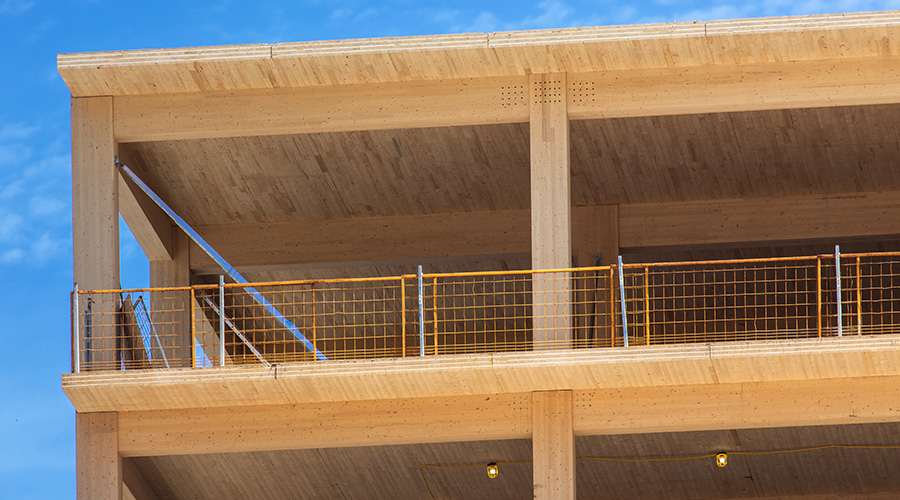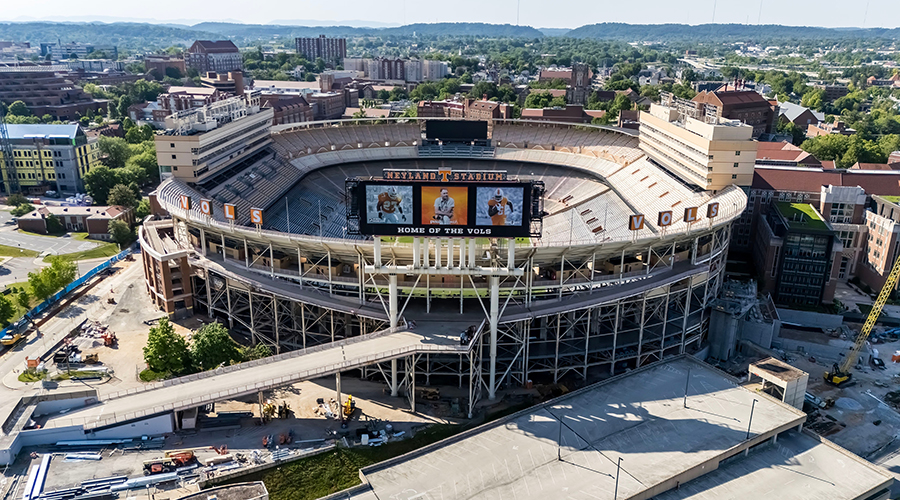High-Level Maintenance
Keeping the Stratosphere Casino Hotel & Tower in Las Vegas running smoothly is a tall order that centers on a rigorous PM strategy
Maintaining a world-renowned tourist attraction so it meets the high standards of daily visitors can be an exacting task. And at the Stratosphere Casino Hotel & Tower in Las Vegas, which rises to almost 1,200 feet in the air, there is no room for error.
The engineering department at the Stratosphere — which boasts the world’s highest amusement rides, at more than 100 stories above ground — must operate at this high level, literally and figuratively, despite being pulled in countless directions every day.
“My priority list changes on a daily basis,” says Rudy Orozco, manager of the mechanical division the complex’s engineering department. “Every day is a new day on the job, and prioritizing is an important part of my job. I just never know what to expect.”
Staff Strength
Keeping the Stratosphere operating smoothly requires 63 engineers working three shifts, as well as 10 managers and office staff. Under Orozco’s direction, the mechanical division oversees the kitchens, refrigeration systems, and the central plant’s chillers, boilers and pumps.
The guest-services division, managed by Dave Johnson, handles room calls, grounds care, and carpentry, including painting, upholstery, carpeting and tile. The third department, run by senior lead Joe Sullivan, handles the fire life safety system, the electrical systems, construction and the amusement rides.
All three managers answer to Jovan Zec, the director of engineering, who describes his department as a model for others in the maintenance management profession.
“We are definitely new school,” Zec says. “We are not old school. We have to think outside the box around here. When they want you to be lean and mean, you have to be aggressive, and we are aggressive.”
Applicants for engineering positions must be highly skilled, or the Stratosphere will not even consider them, Zec says. And once on board, new workers go through annual required training in every applicable field, from boiler and air-conditioning maintenance to pipe fitting and major electrical work.
The mechanical division is responsible for the vast majority of equipment within the complex.
The main plant houses four 1,280-ton centrifugal chillers and three 13.5-million Btu water-tube boilers. Also, a 640-ton chiller cools the pod, but it can be switched over to the main plant, if needed.
At 500 feet in the air inside the tower, a station houses water pumps that boost domestic and chilled water another 500 feet up to the pod. A separate heating system in the pod, made up of four water tube-boilers, supplies heat and hot domestic water.
“Our controls system is state-of-the-art, allowing us to change the temperature in any room of the property, turn on and off lights, turn on and off any piece of equipment, and also monitor and make changes to our sister property, Arizona Charlie’s, which is about 10 miles away, all from a centrally located computer in the central plant and one in my office,” Orozco says. “I’m also able to log on from my personal computer at home, and soon with the help of the Internet, I’ll be able to log on from any computer in the world.”
Regardless of the remote-control capabilities, the staff spends plenty of time out in the field. Engineers from every division and on every shift perform daily rounds to monitor casino temperatures, refrigeration-system temperatures, indoor and outdoor lighting, pool chemical balance, and boiler and chiller performance.
The team keeps in touch with two-way radios, and the central dispatch office is manned 24 hours a day, seven days a week.
Commitment to PM
Maintaining existing equipment properly is always on top of his priority list, Zec says. His says his focus when he took the job two years ago was ensuring a strong preventive maintenance (PM) program, which he relied on Orozco to help implement. The mechanical division requires the most PM, roughly 80-90 percent of such work done at the Stratosphere.
“I think our program is one of the best – in the top four in the city, and you’re talking about a lot of megaresorts,” Zec says. “Over the last two years, we’ve had no major breakdowns, and it’s strictly due to the TLC of the preventive maintenance.
“A lot of people know this, but a lot of people don’t understand this: Preventive maintenance is a heck of a lot cheaper than troubleshooting breakdowns.”
Zec says 20 percent of his budget is allocated to the PM program, down from 35 percent when he started. He can’t recall the department missing one scheduled PM in two years, which is paying off.
“As with any good preventive maintenance program, it’s the little things, the TLC you give the equipment,” Zec says. “If you concentrate on big things, your opportunities on the equipment are few and far between. If you do the little things consistently, then you avoid the big troubleshooting issues — the breakdowns that constitute big dollars.”
It is not always easy to keep up the PM program because there are always special projects happening at the Stratosphere, Orozco says. The team does exactly that, however, putting in overtime when necessary to ensure that PM tasks are done.
“One important factor is the good communication we have between the three shifts,” Orozco says. “Since the hospitality industry is a 24-hour business, it’s important (for us) to know what happened on prior shifts and to pass information to the upcoming shifts.”
Paying the Price
The engineering department has wide discretion when purchasing products and systems for inspection, maintenance and renovation projects. Big-ticket items need approval from facility executives, but Zec says the organization is supportive.
For example, the two amusement rides have solid safety records because when it comes to the annual cost of PMs on the rides, cost is no object. The team completely rebuilds the rides once a year.
“No cost is too big to make these rides safe,” Zec says. “The company is very clear. Customer safety is our number one priority.”
But as with most other organizations, the department’s budget is tight and its staff still must run at top speed, he says. His goal is to ward off potential budget problems with the PM program.
“The (Stratosphere) utilizes my general contracting license, so this department even assists me in construction project management,” he says. “Our plate is extremely full. Because we are lean, the goal is to never, ever falter on PMs. That is what saves us money and allows us to do construction.”
Beyond Maintenance
Orozco says the most challenging part of his day often is ensuring his engineers are available to support Stratosphere staff as they are needed.
“We have to please a large amount of other departments, all of which require their own special needs,” Orozco says. “We adjust to meet all kinds of different needs, aside from performing our daily repairs and maintenance. A challenge is meeting demands and providing public relations” for engineering.
Zec understands that challenge, noting that his most important duty is cultivating division managers, which can only be done once maintenance is under control.
“The best part of the job is when you can get the program running so well that it runs itself and you can spend your time developing your managers,” Zec says. “I like to see them mature as managers and progress in their people skills. They already have the technical skills. My job is to turn them into people managers, because if you manage people instead of equipment, you’re ahead of the game.”
Apparently, it works. Despite the unpredictable schedule, Orozco says he wouldn’t change a thing.
“What keeps me coming back is a sense of adventure, never knowing what’s going to happen tomorrow,” he says. “Although at times it is very stressful and I’m under pressure, I still have a sense of worth and care about the job very much.”
Stratosphere Stats
The Stratosphere Tower is the tallest freestanding observation tower in the United States, topping out at 1,149 feet.
Its 12-story pod houses observation decks and a revolving restaurant. Also, the Big Shot thrill ride shoots 160 feet above the pod, and the High Roller roller coaster wraps around the roof on 865 feet of track.
Double-decker elevators moving 20 mph carry visitors to the observation decks in less than 30 seconds.
The hotel has 2,444 rooms, including 220 luxury suites.
The 80,000-square-foot casino houses more than 50 game tables and 1,500 slot and video-poker machines.
The casino and hotel contain seven restaurants, including the Top of the World atop the tower, which revolves 360 degrees in 90 minutes.
|
Related Topics:











